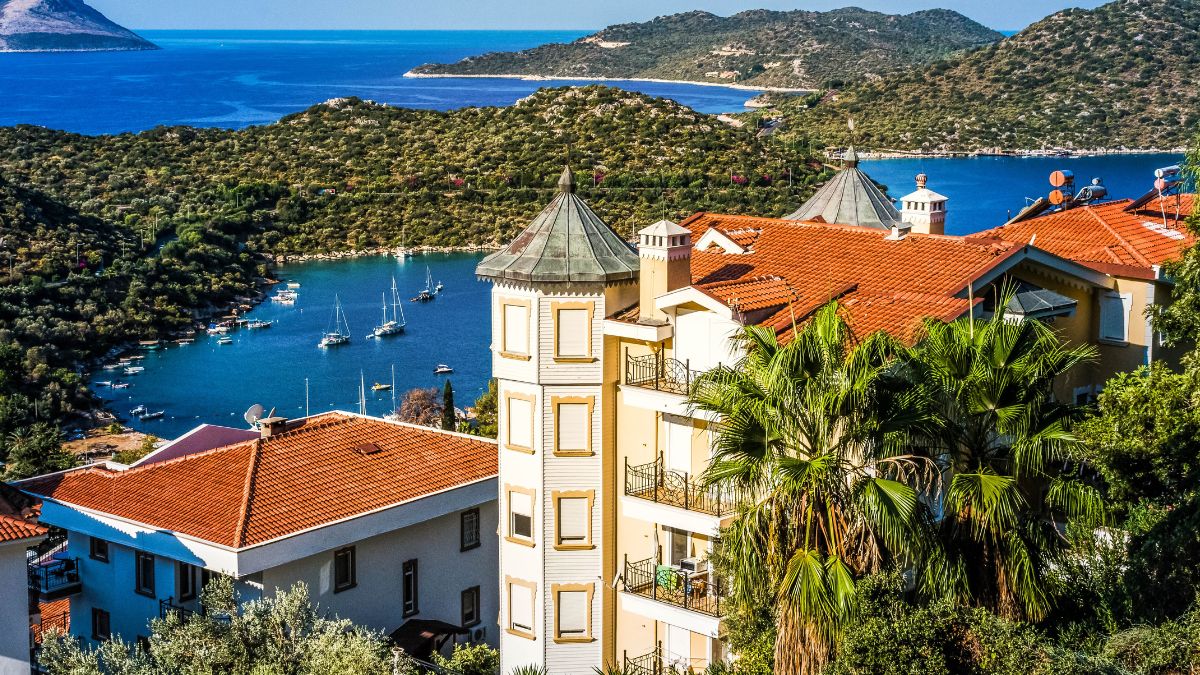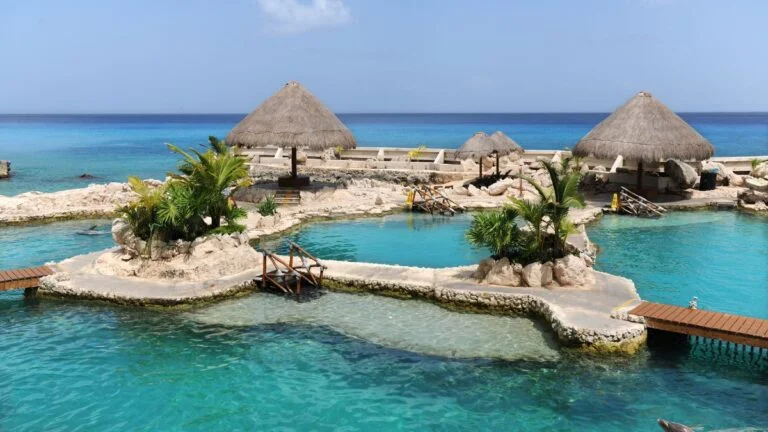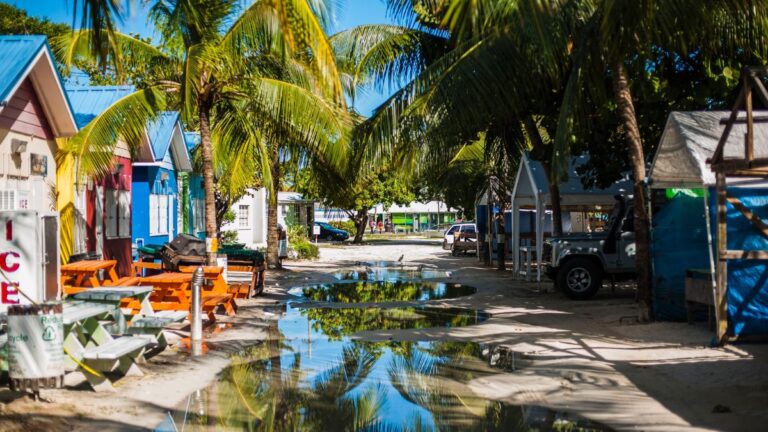Worst Time to Visit Antalya: Beware of These Dates to Save Yourself from Frustration

As participants in Amazon Associates and other programs, we earn from qualifying purchases. This comes at no additional cost to you. For more details, see our Affiliate Disclosure.
When planning an unforgettable vacation, timing is everything. Nestled on Turkey’s southwestern coast, Antalya boasts sun-kissed beaches, captivating history, and a dynamic cultural scene. However, as with any popular destination, there are certain times of the year when visiting can be less than idyllic.
This article unveils the dates you should avoid when planning your trip to Antalya, to ensure your experience isn’t tarnished by overcrowding, unfavorable weather, or inflated prices. Knowing these less desirable times to visit can save you from frustration and ensure your Antalyan adventure is nothing short of extraordinary.
Navigating the Peak Season: The Downsides of Summer Crowds
Antalya, due to its coastal charm and warm Mediterranean climate, is a sought-after destination for both local and international travelers, especially during the summer. The peak season, which typically runs from June to August, is when Antalya experiences its highest influx of tourists. While the appeal of sun-soaked days and lively beach scenes is undeniable, there are several downsides to consider when planning a summer visit.
Firstly, the large crowds can often make for a less relaxing vacation. Popular attractions like Hadrian’s Gate, the old city of Kaleiçi, and Düden Waterfalls become inundated with tourists. The result? Longer waiting lines, less personal space, and a generally more stressful experience. Also, packed beaches may hinder your peaceful sunbathing plans.
Secondly, peak season often means peak pricing. Hotels, restaurants, and local services typically increase their prices during these months, impacting your travel budget.
Lastly, the summer heat in Antalya can be extreme, regularly soaring above 30 degrees Celsius (86 degrees Fahrenheit), which might be uncomfortable for some, particularly those not accustomed to such high temperatures.
Thus, while the vibrant energy of Antalya in the summer can be enticing, the overcrowding, increased costs, and intense heat may dampen the holiday joy for some travelers. Plan carefully to ensure your peak-season visit doesn’t leave you feeling more frazzled than refreshed.
When Rainy Weather Reigns: Antalya’s Wettest Months
Just as the summer brings a fiery heat to Antalya, the winter months invite their own weather challenges, notably rainfall. From mid-November through to February, Antalya enters its rainy season, with January generally being the wettest month. Though Turkey’s rainfall doesn’t compare to the torrential downpours of a tropical monsoon, these wet months can certainly put a damper on your vacation plans.
Tourist activities, particularly those outdoors like exploring the ancient ruins of Perge or strolling along Konyaalti Beach, may be frequently disrupted or less enjoyable during periods of heavy rain. The grey skies and lower temperatures that accompany these wetter months also mean fewer opportunities for sunbathing and swimming.
Moreover, with the rain sometimes comes chillier temperatures. Winter in Antalya can see temperatures dropping to around 10 degrees Celsius (50 degrees Fahrenheit) – relatively mild compared to many other places, but a potential disappointment if you’re expecting year-round warmth.
While winter in Antalya has its own appeal – fewer tourists and lower prices, for example – be prepared for the wet weather if you choose to visit during this time. It’s wise to pack appropriately and have a list of indoor activities at hand in case of a sudden downpour.
The Double-Edged Sword of Holiday Periods: Festivities vs. Overcrowding
Holiday periods often bring a festive atmosphere to Antalya, illuminating the city with vibrant celebrations and cultural events. However, these periods also coincide with a significant surge in tourism, making them a double-edged sword for visitors.
Local holidays, such as the Ramadan Feast and the Sacrifice Feast, and international holidays like Christmas and New Year’s, attract a larger number of visitors. These holidays, while providing the opportunity to experience authentic local traditions, often lead to overcrowding. Expect packed restaurants, congested streets, and a potentially longer wait for attractions and activities.
Moreover, during such holidays, prices for accommodations and flights can also skyrocket due to increased demand. And while the city teems with life and festivity, the high influx of people might cause some local businesses to be overwhelmed, potentially impacting the quality of service you receive.
Another aspect to consider is that during major Turkish holidays, some locals also take their vacations, which can lead to temporary closures of small businesses and restaurants.
So, if you’re considering visiting Antalya during a holiday period, be prepared for the pros and cons. Experiencing the local celebrations can be a unique cultural experience, but the potential downsides – overcrowding, higher prices, and intermittent closures – require careful planning and patience.
Beware of Surge Pricing: Expensive Dates to Watch Out For
Every seasoned traveler understands that costs can vary significantly depending on when you choose to embark on your journey. In Antalya, there are specific dates and periods when you’ll encounter surge pricing, impacting everything from flights and accommodations to local services and attractions.
As previously mentioned, the summer months of June to August, characterized by beautiful weather and bustling beach life, are also the peak tourist season. This high demand period leads to an inflation in prices, particularly for accommodations and flights. Booking well in advance might mitigate some of these costs, but expect to pay a premium for your summer sojourn.
Similarly, holiday periods like Christmas, New Year’s, and local Turkish holidays are also subject to surge pricing. A significant increase in both local and international tourists drives up the demand, and prices rise in response.
Lastly, remember that certain city-wide events and festivals can cause a spike in prices. For instance, the Antalya Golden Orange Film Festival, a prominent event usually held in October, draws a substantial crowd leading to a temporary surge in prices.
Being aware of these costly periods and planning your budget accordingly can help prevent unwelcome financial surprises. If you have flexibility in your travel dates, consider scheduling your trip during Antalya’s shoulder seasons (April-May and September-October) for a more budget-friendly experience.
Inferno Heat: The Unbearably Hot Days of Antalya
The allure of a warm climate and stunning beaches draws countless visitors to Antalya. However, it’s essential to keep in mind that during certain periods, Antalya’s heat can become exceptionally intense, sometimes verging on unbearable.
Typically, the hottest months in Antalya are July and August, when temperatures frequently soar above 30 degrees Celsius (86 degrees Fahrenheit), often peaking around 34-35 degrees Celsius (93-95 degrees Fahrenheit). The combination of the intense sun, high temperatures, and humidity can make these summer days uncomfortable, particularly for those not used to such a hot climate. Extended exposure to such heat can also pose health risks, such as heat exhaustion or heatstroke.
During these sweltering summer months, activities like sightseeing, hiking, or even lounging on the beach can become strenuous. If you’re not a fan of such scorching temperatures, it’s worth considering scheduling your trip during the cooler months.
If a summer trip is your only option, remember to take necessary precautions to protect yourself from the heat. Stay hydrated, wear sunblock, seek shade during the hottest part of the day, and plan indoor or water-based activities to cool down.
Navigating the inferno heat of Antalya’s summer can be challenging, but with the right planning and precautions, it’s certainly possible to enjoy all that this beautiful city has to offer.
Overbooked and Overwhelmed: Times When Accommodations are Scarce
Finding the right place to stay is a crucial part of any vacation planning. In Antalya, however, there are certain periods when accommodations can be particularly scarce due to high demand, which can be a significant source of frustration for travelers.
As expected, the summer months from June to August pose the most significant challenge. As tourists flock to Antalya to enjoy its warm beaches and vibrant nightlife, hotels, resorts, and even vacation rentals can get fully booked rapidly. Last-minute bookings during this peak season are particularly risky and can lead to high rates or suboptimal accommodation choices.
Holiday periods, whether international or local, such as New Year’s, Christmas, Ramadan Feast, and the Sacrifice Feast, also witness a high demand for accommodations. Similarly, city-wide events, like the Antalya Golden Orange Film Festival, cause a temporary but significant demand spike.
To avoid the stress of searching for a place to stay during these busy periods, it’s wise to book your accommodations well in advance. Alternatively, consider traveling during Antalya’s shoulder seasons, when the weather is still pleasant, and accommodations are more readily available and affordable. By planning carefully, you can secure your ideal lodging without having to worry about availability or inflated prices.
The Off-Peak Trade-Off: Lower Prices, Fewer Services
The off-peak season in Antalya, mainly November to March, can offer many advantages such as lower prices and fewer crowds, presenting an attractive option for budget-conscious travelers or those seeking a quieter experience. However, it’s crucial to understand the trade-off that comes with these benefits.
During these less busy months, many hotels, restaurants, and attractions may reduce their operating hours, or some may close altogether, particularly those that are more seasonally focused like beach clubs or certain outdoor attractions. Similarly, the frequency of public transport services might also decrease during this period, which can impact your mobility around the city.
Moreover, while the milder winter weather can still be pleasant, it may not offer the quintessential beach experience that many associate with Antalya. Temperatures can drop, and as discussed earlier, rainfall is more frequent, limiting opportunities for outdoor activities.
Therefore, while the off-peak season comes with the lure of lower costs and less crowded attractions, it’s crucial to factor in the potential reduction in services and changes in weather. A bit of research and planning can help ensure that your off-peak visit to Antalya is enjoyable and aligns with your expectations.
Important Local Events and Their Impact on Your Visit
Local events, festivals, and holidays are a vibrant showcase of a city’s culture and traditions, and Antalya is no exception. While these events can provide enriching experiences, they can also significantly impact your visit in various ways, often leading to crowded conditions, price surges, and changes in the availability of services.
Here are a few key local events to keep in mind:
- Antalya Golden Orange Film Festival: Usually held in October, this renowned film festival attracts cinephiles and industry professionals from around the globe, leading to a surge in tourist numbers and a potential rise in prices, particularly in accommodations.
- Ramadan and Eid Festivals: These Islamic holidays are celebrated widely in Antalya. While they offer a unique cultural experience, they also lead to an influx of local tourists, leading to crowded conditions and potential disruptions in services as some locals may also take time off during these periods.
- Antalya International Jazz Festival: Held in the peak of summer, this popular event can cause a brief surge in tourist numbers, impacting prices and availability of accommodations.
- National Holidays: Holidays such as Republic Day on October 29th, bring nationwide celebrations. These events, while interesting to witness, can also mean busy streets, disruptions in public transport, and potential closures of public institutions like banks and government offices.
Being aware of these events when planning your visit to Antalya can help you prepare accordingly. It’s wise to book accommodations well in advance if you plan to attend any of these events, and be ready for potential changes in services and prices during these times. Balancing the vibrant allure of these events with their potential challenges is key to ensuring an enjoyable stay in Antalya.
Better Alternatives: The Best Times to Visit Antalya
While it’s important to be aware of the less desirable times to visit Antalya, it’s equally crucial to know the best times to visit this vibrant city. Balancing factors such as weather, pricing, and crowd levels, the “shoulder seasons” – spring and autumn – often emerge as the most attractive options for most travelers.
- Spring (April to June): Spring in Antalya is a delightful time, with mild temperatures, fewer crowds, and the beauty of nature in full bloom. Attractions are less crowded, prices are lower than the peak season, and the weather is generally comfortable for outdoor activities.
- Autumn (September to early November): Similarly, autumn in Antalya offers an appealing mix of pleasant weather, moderate tourist crowds, and attractive prices. The sea remains warm enough for swimming well into October, and the region’s natural beauty shines with the colors of the season.
These periods offer a great balance, allowing you to enjoy the best of Antalya without the intense summer heat, crowded attractions, or winter rains. You can soak up the sun on the beaches, explore historic sites, and savor local cuisine without dealing with the downsides of peak or off-peak travel periods.






